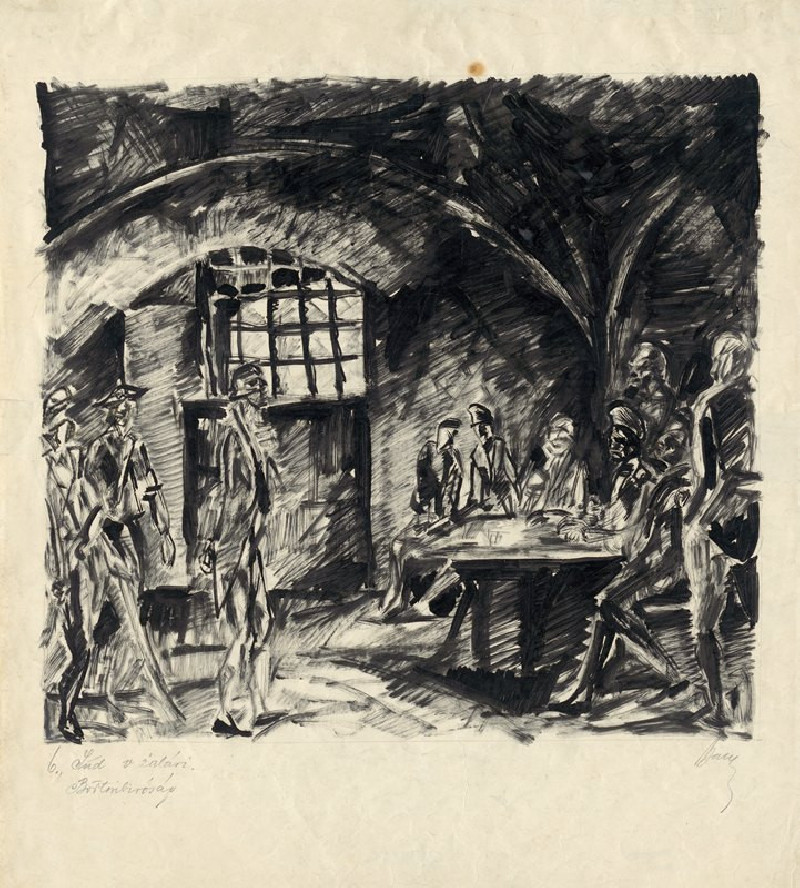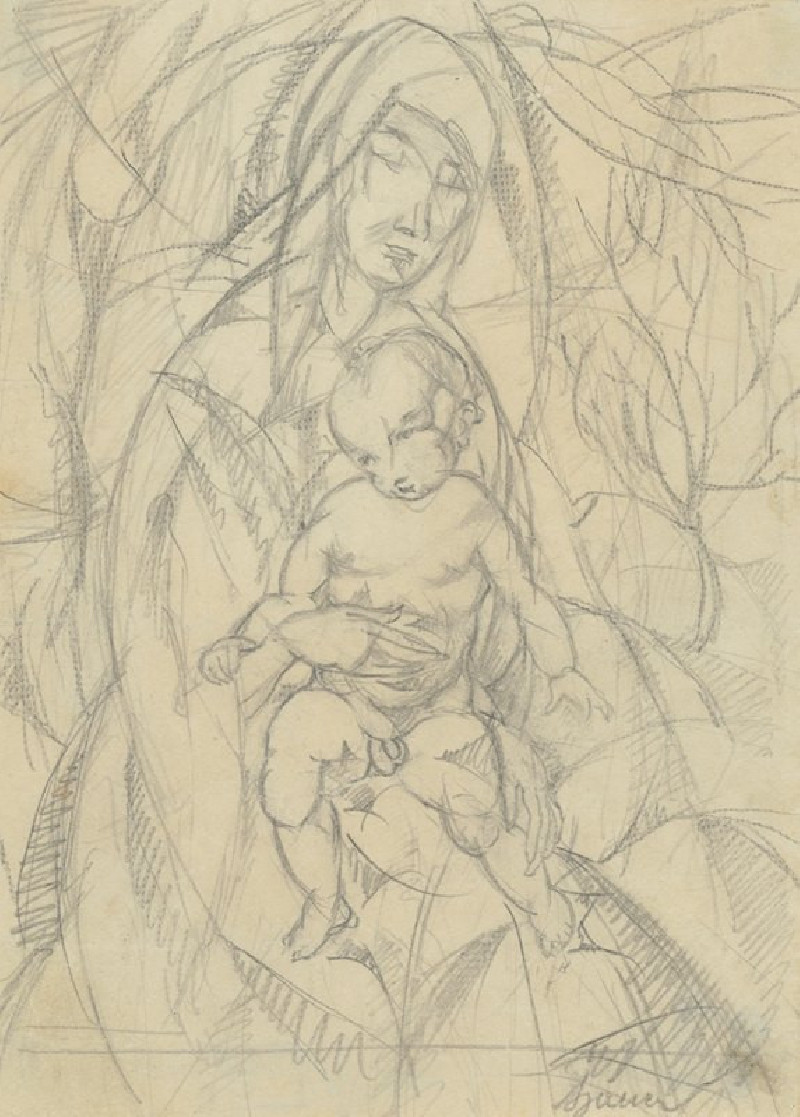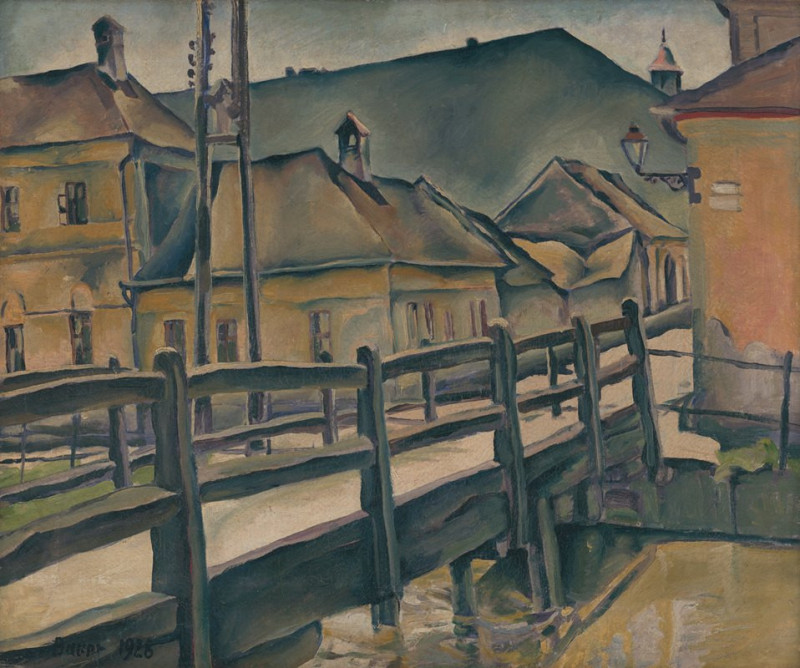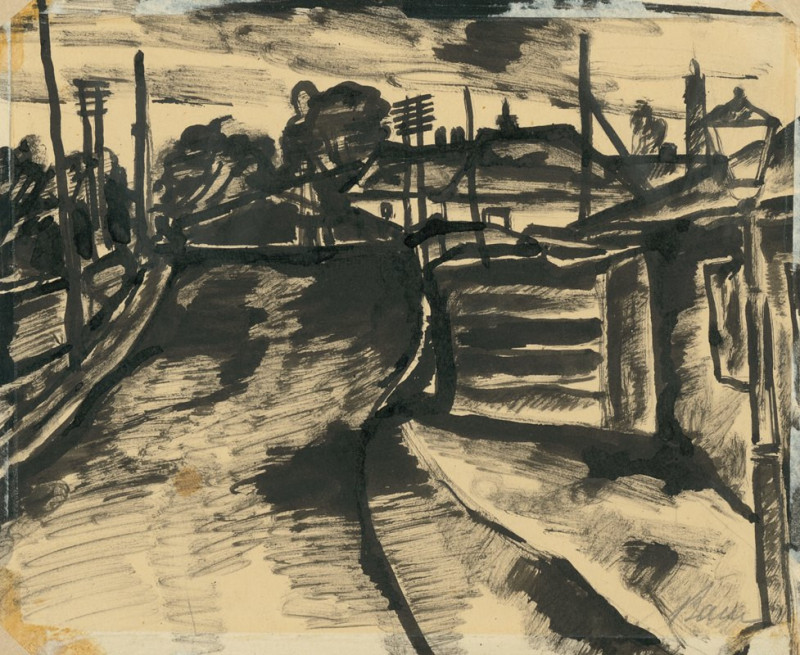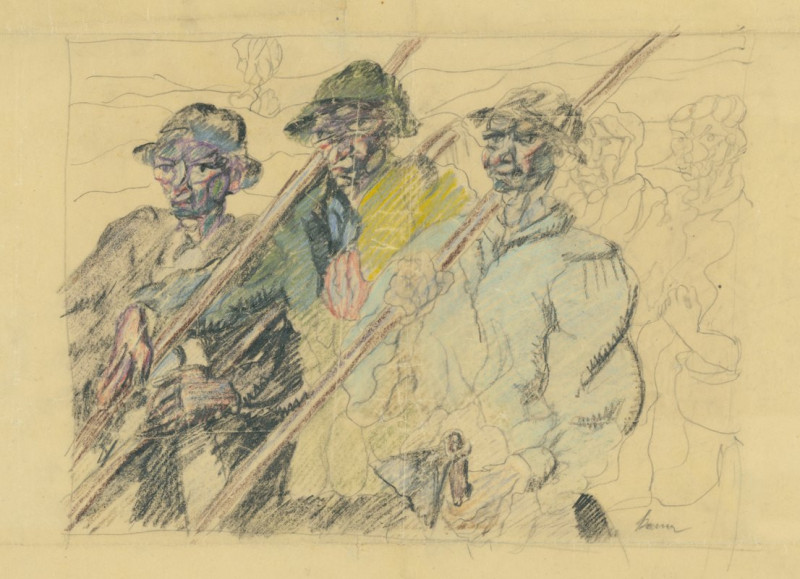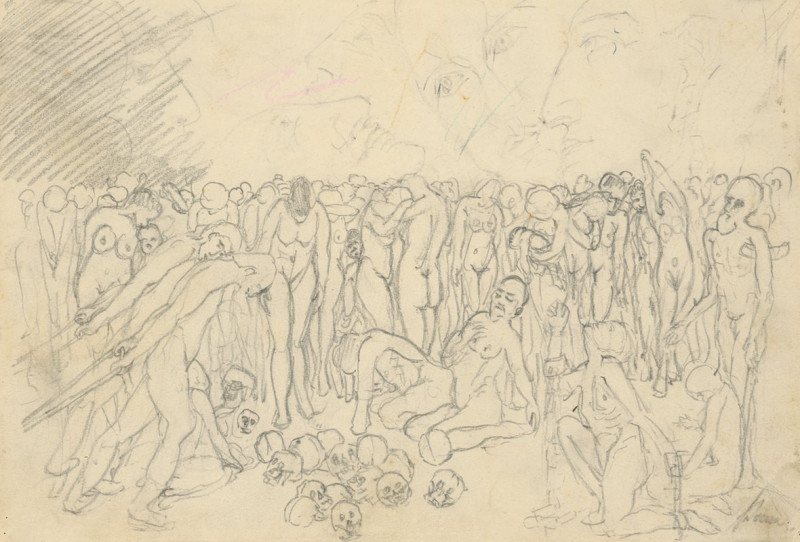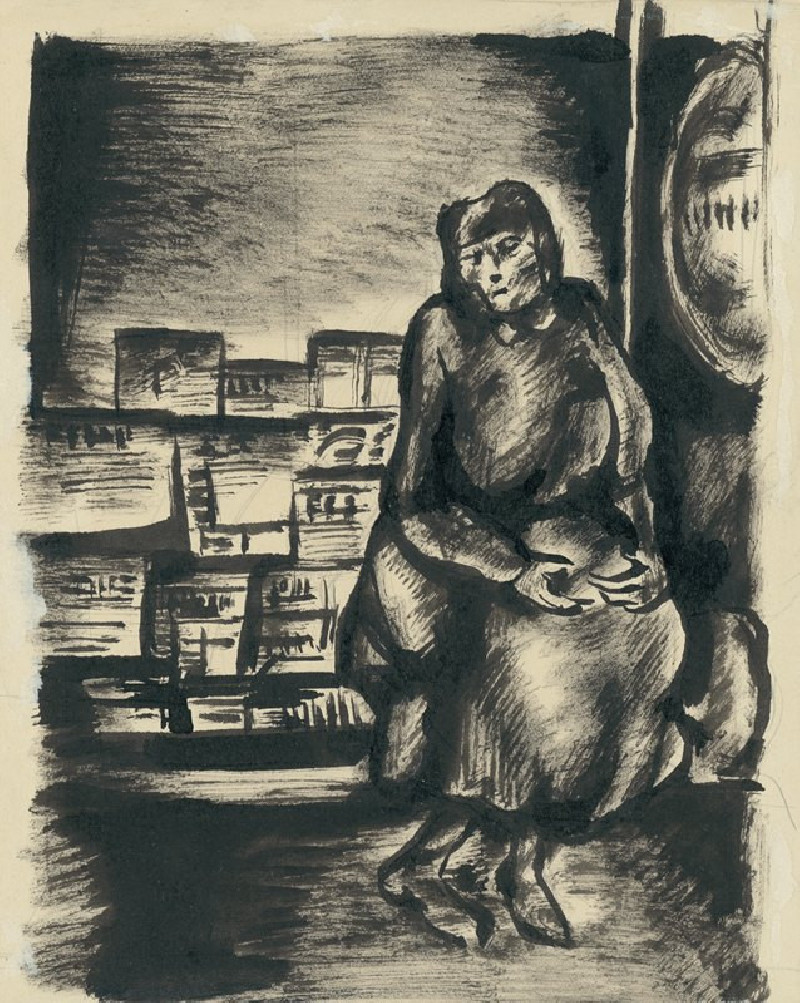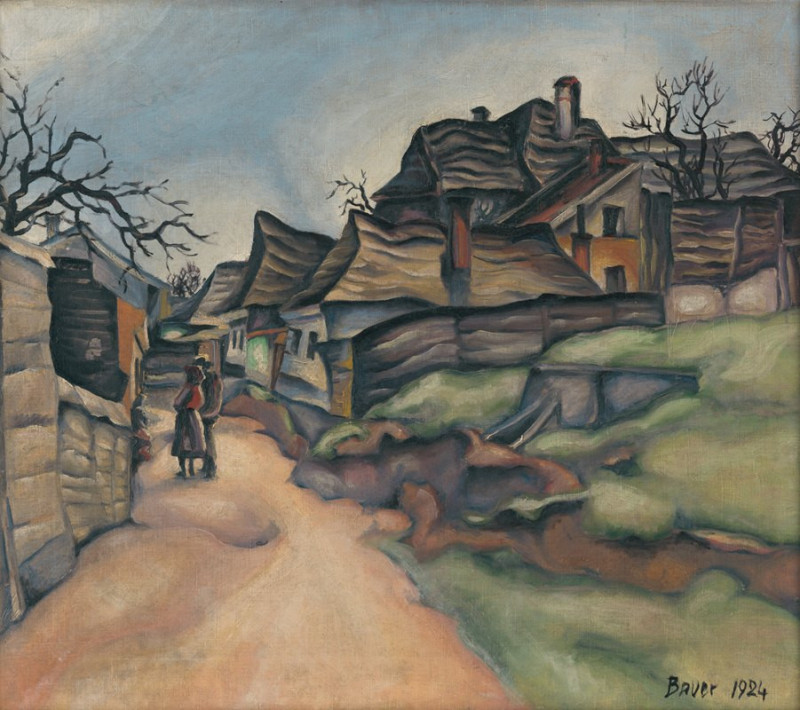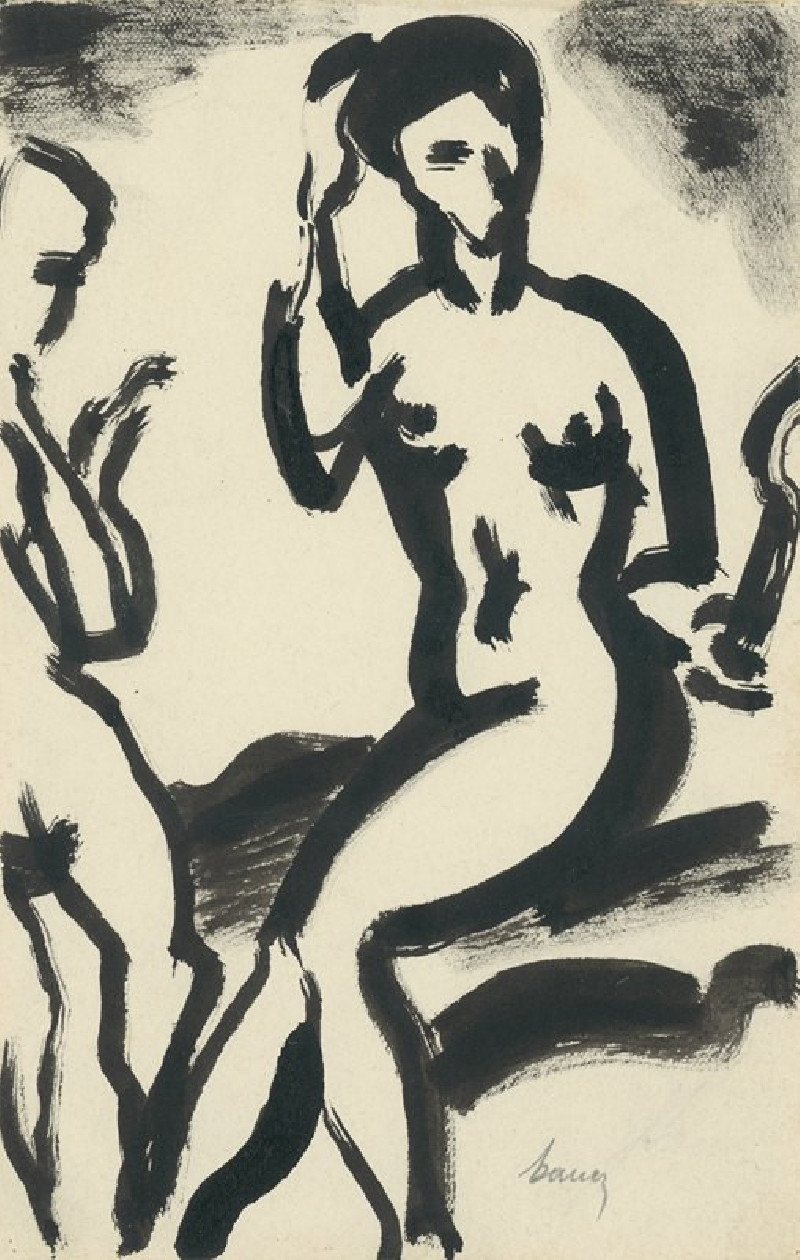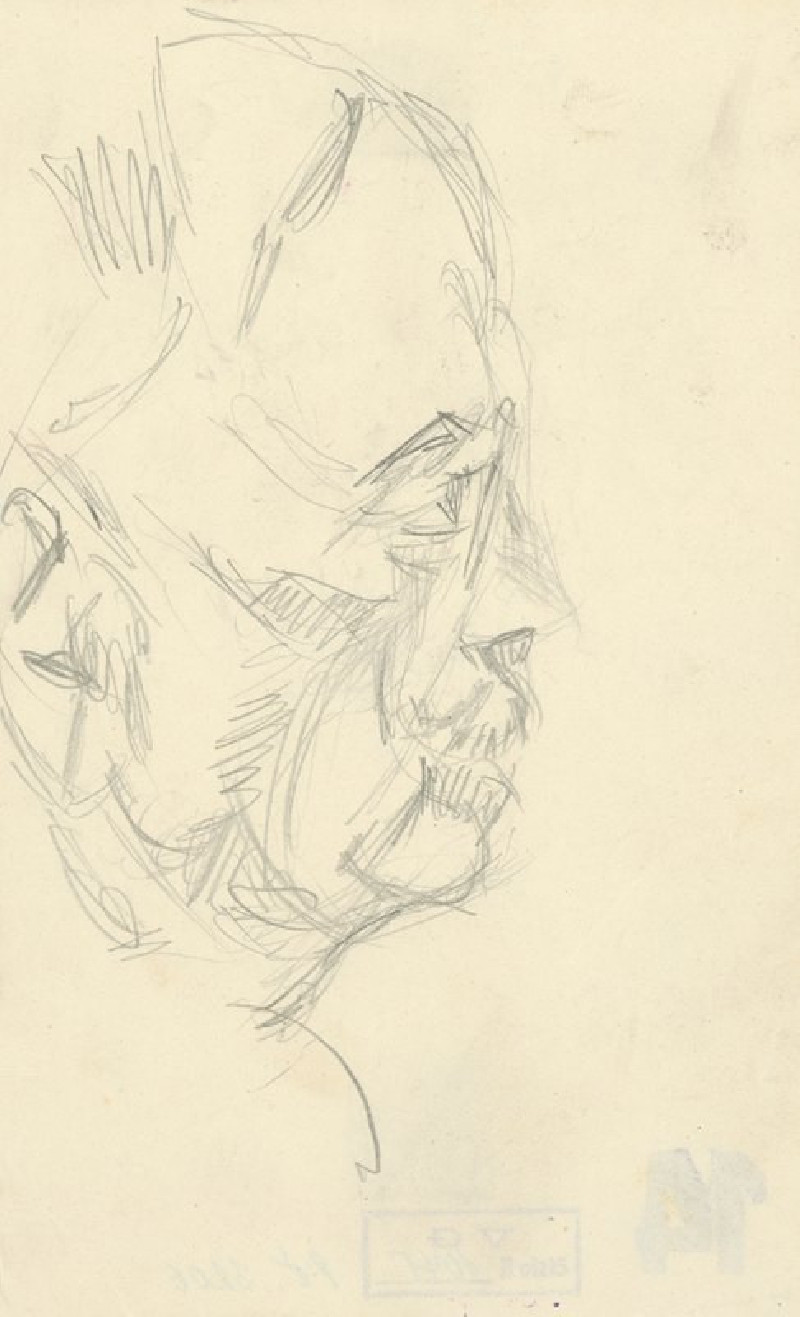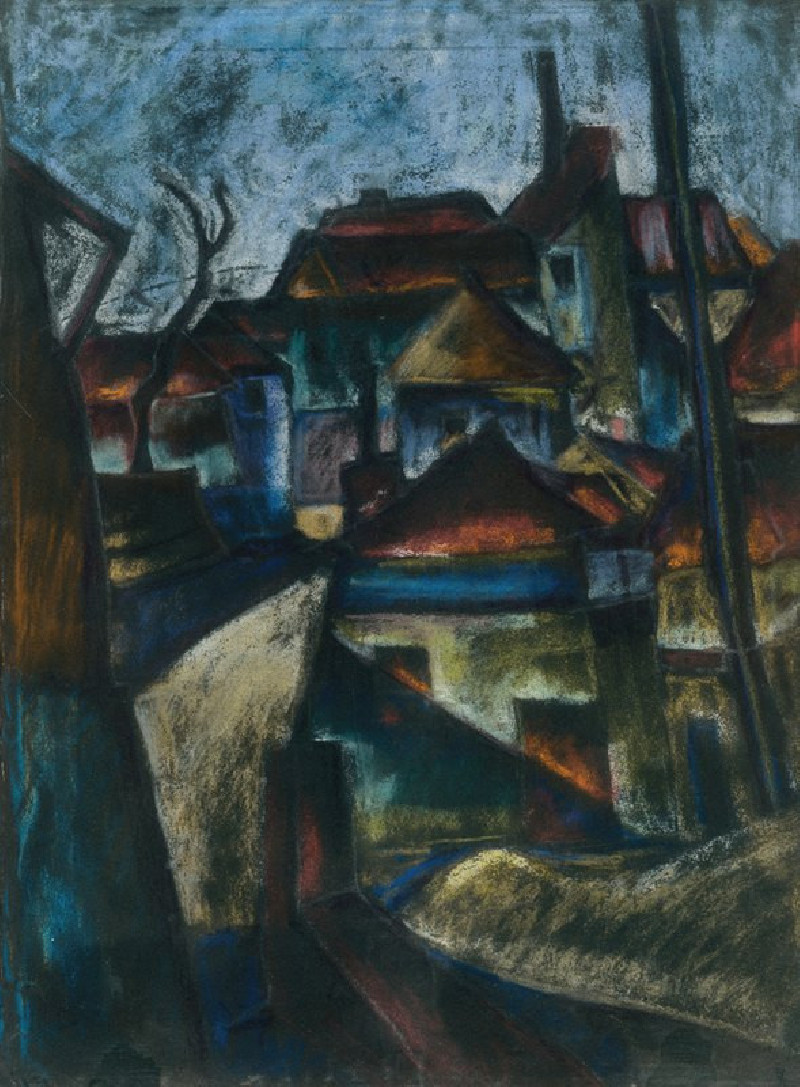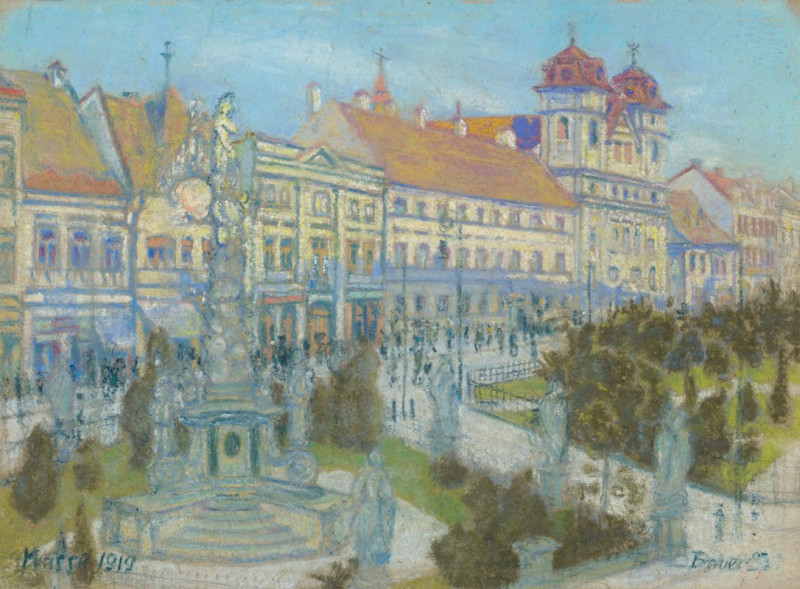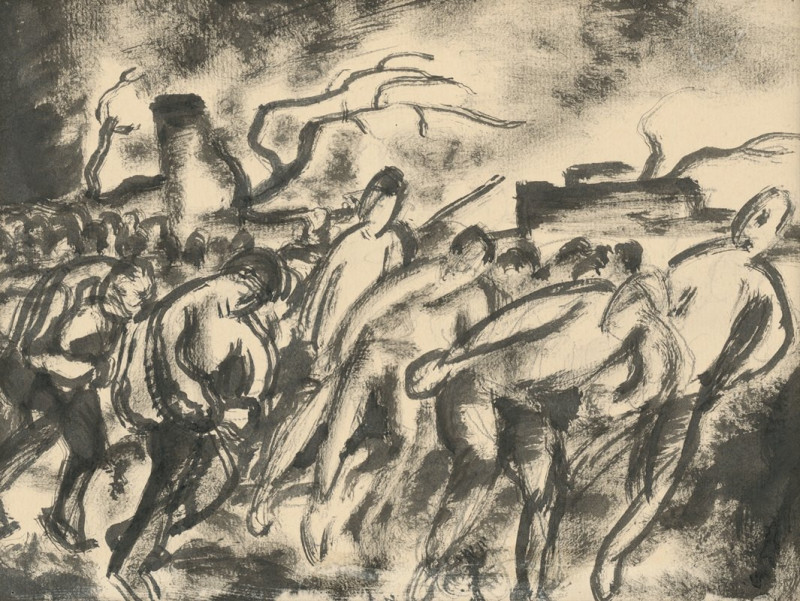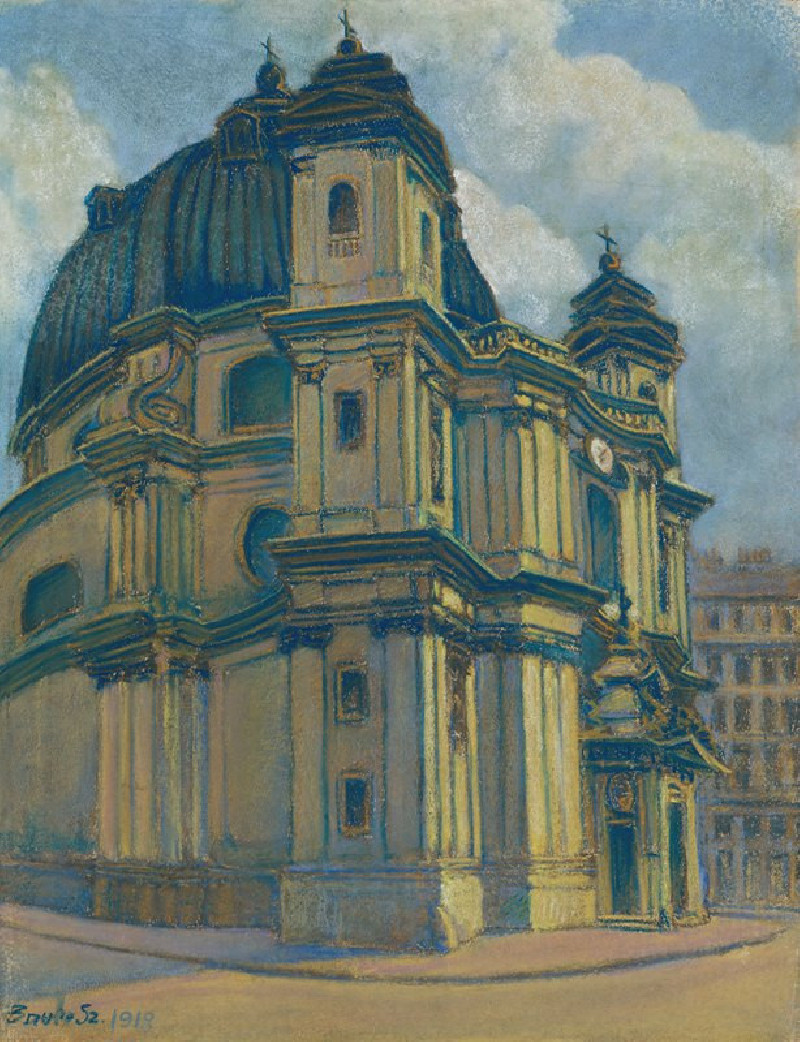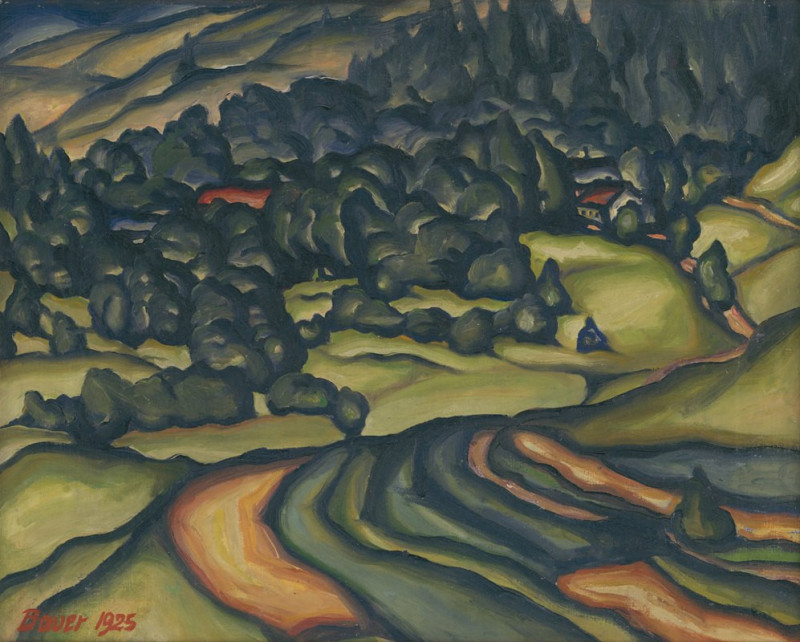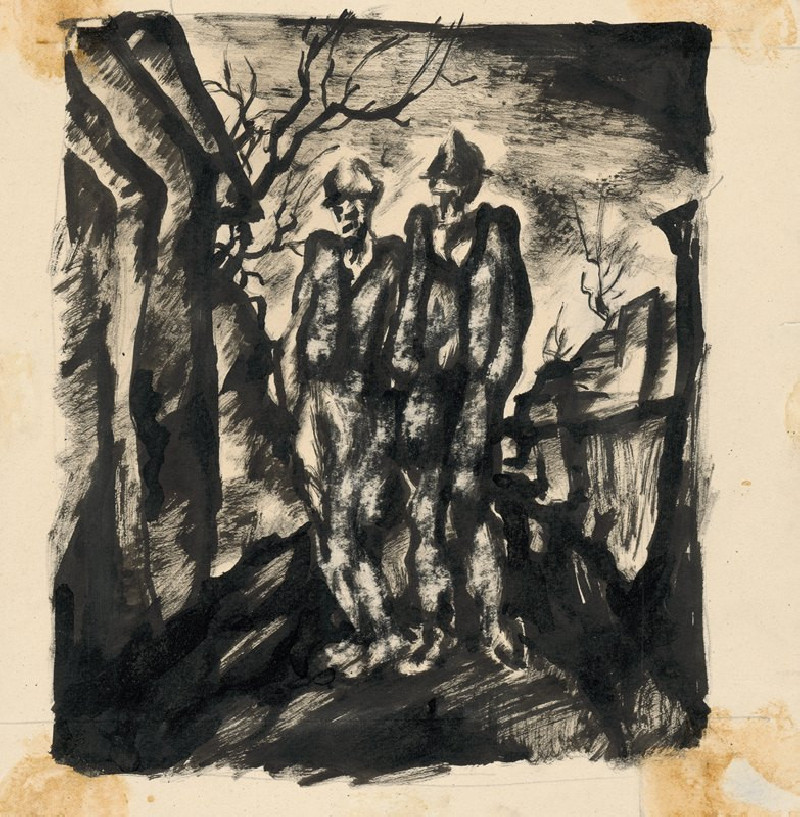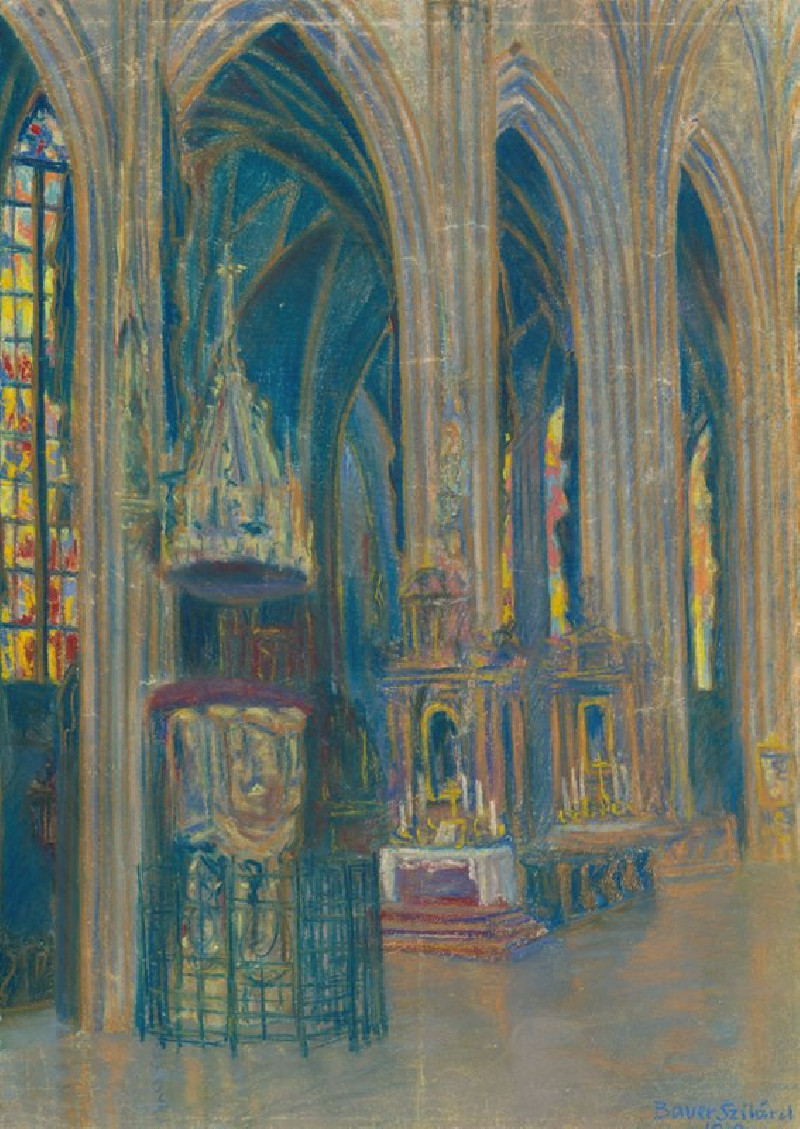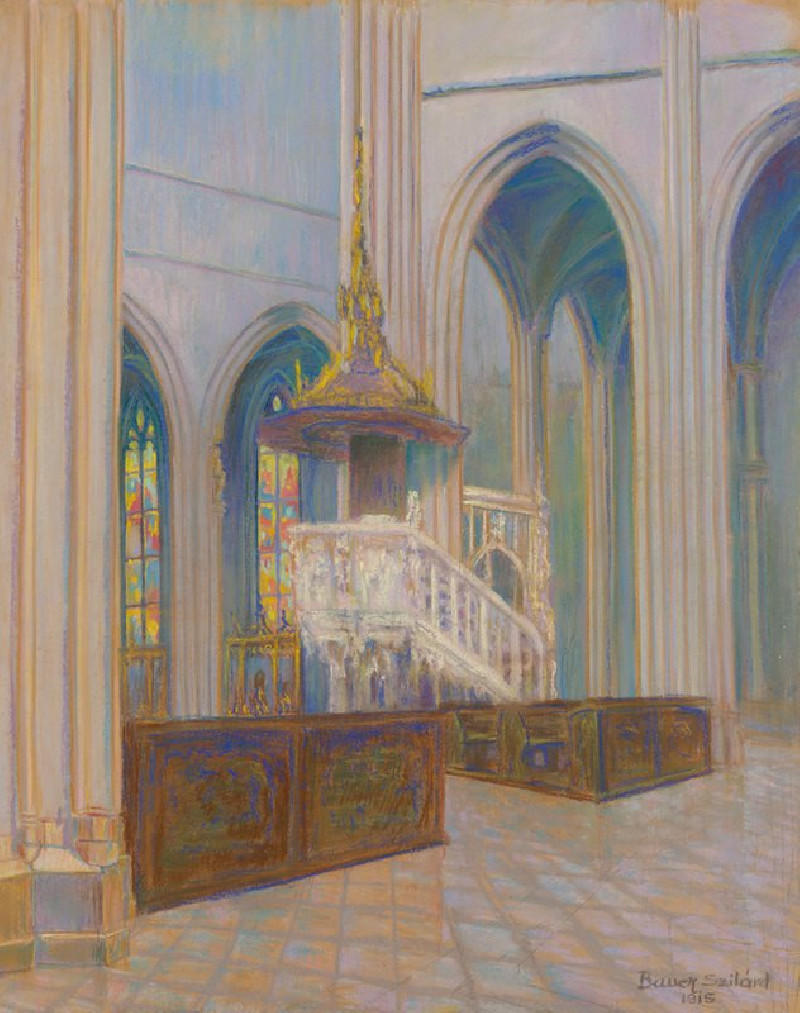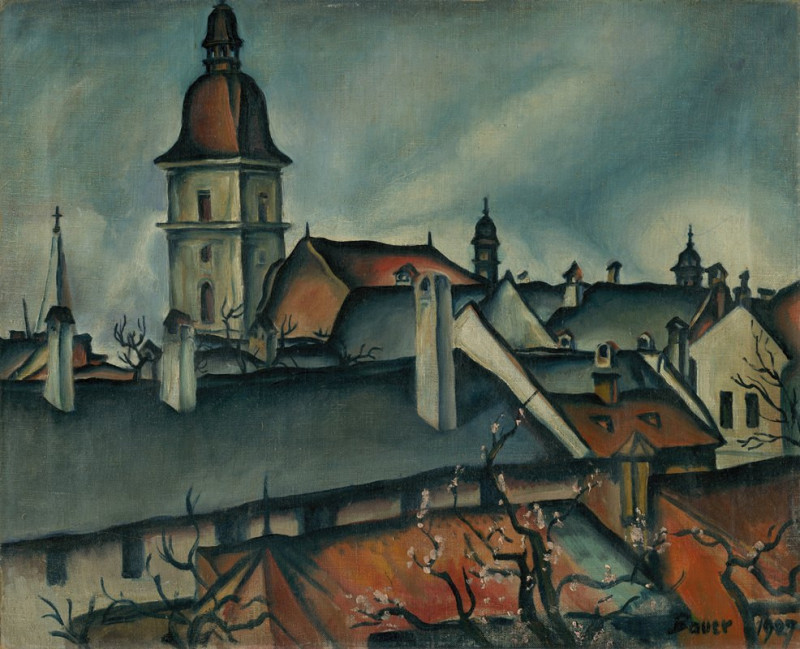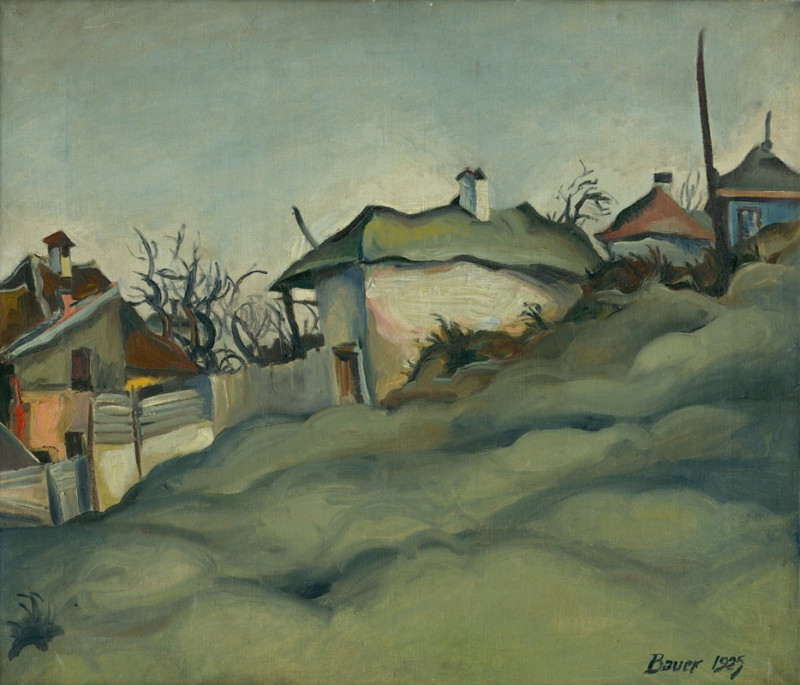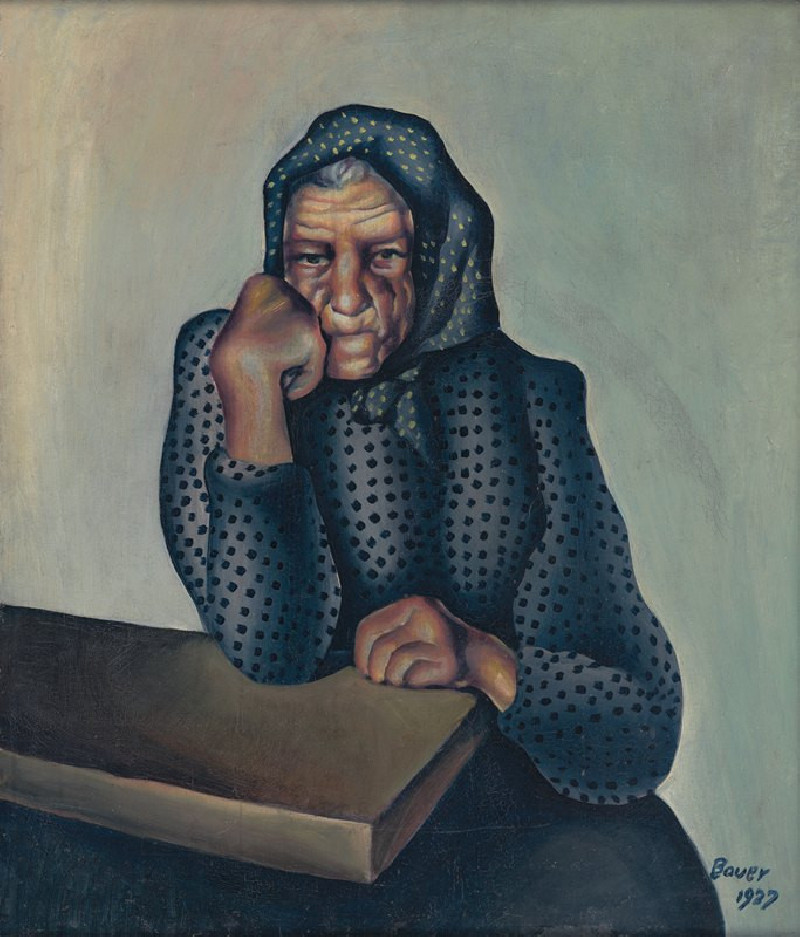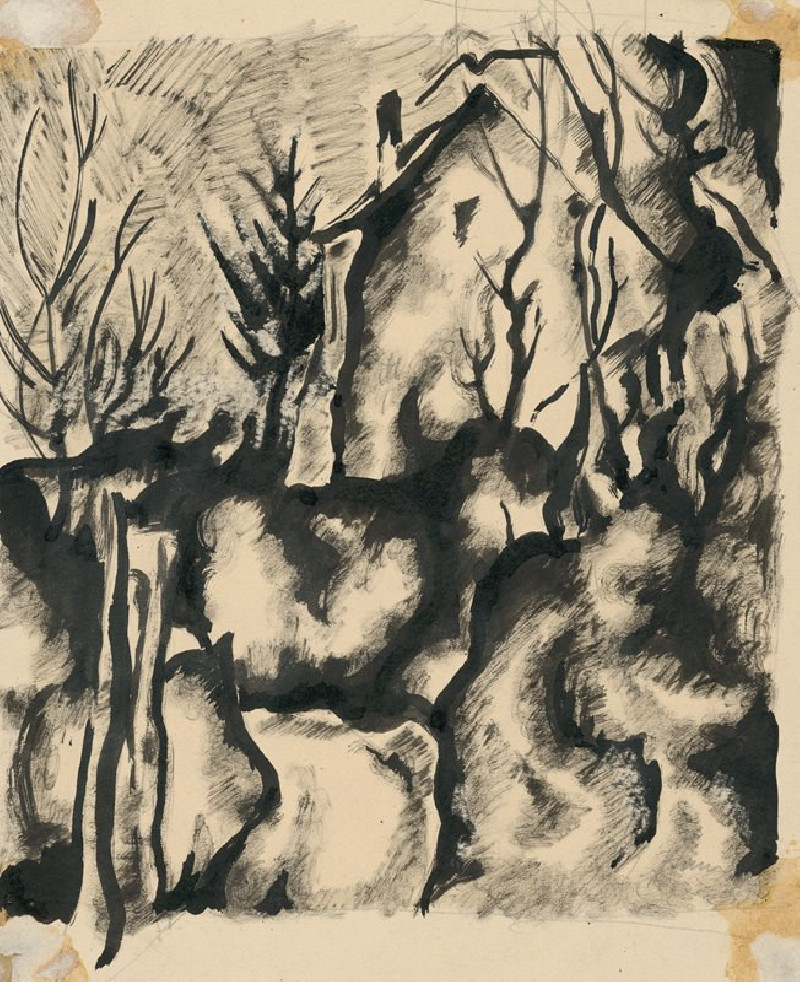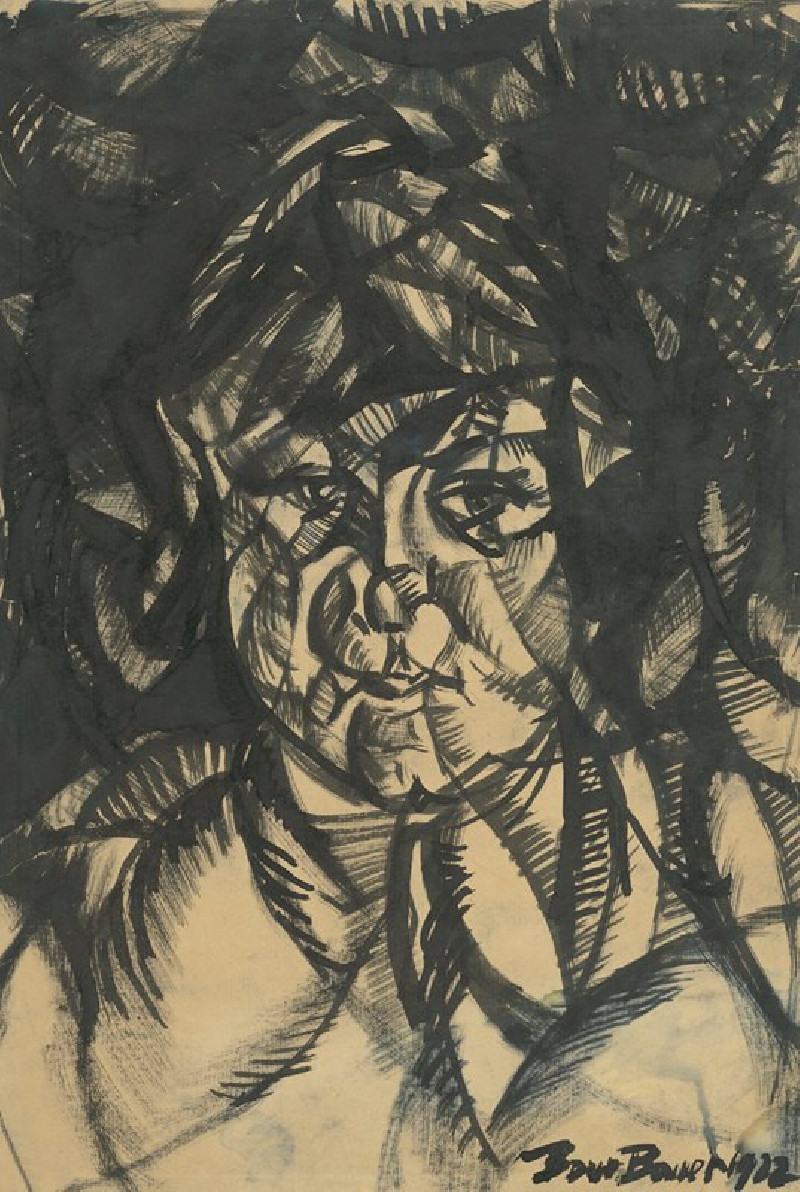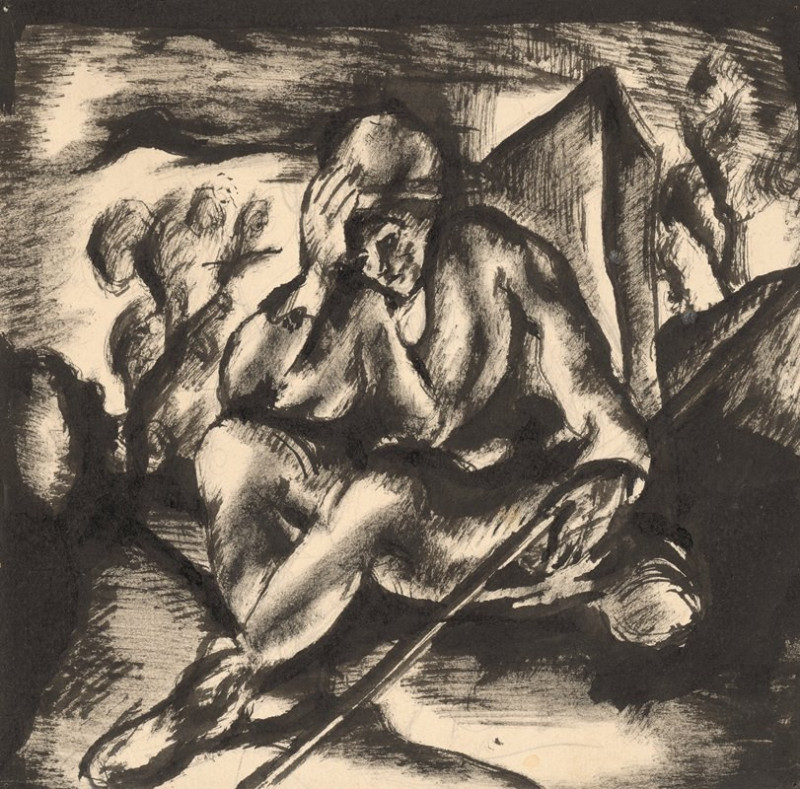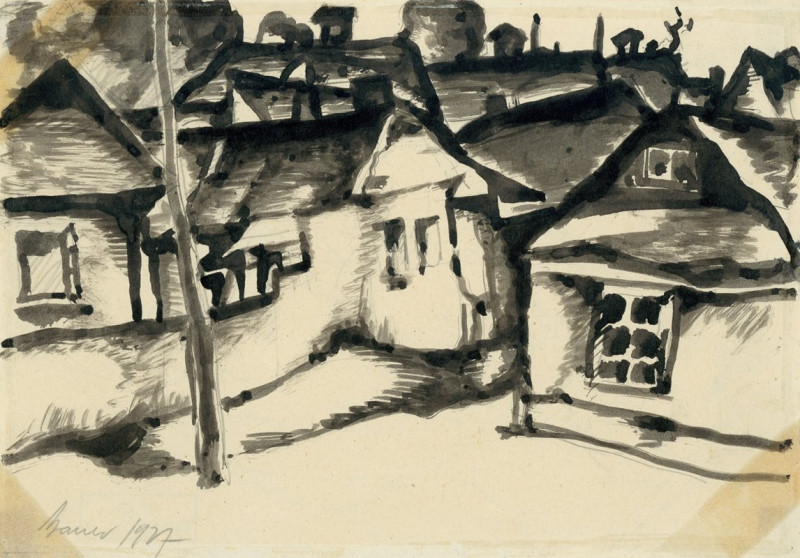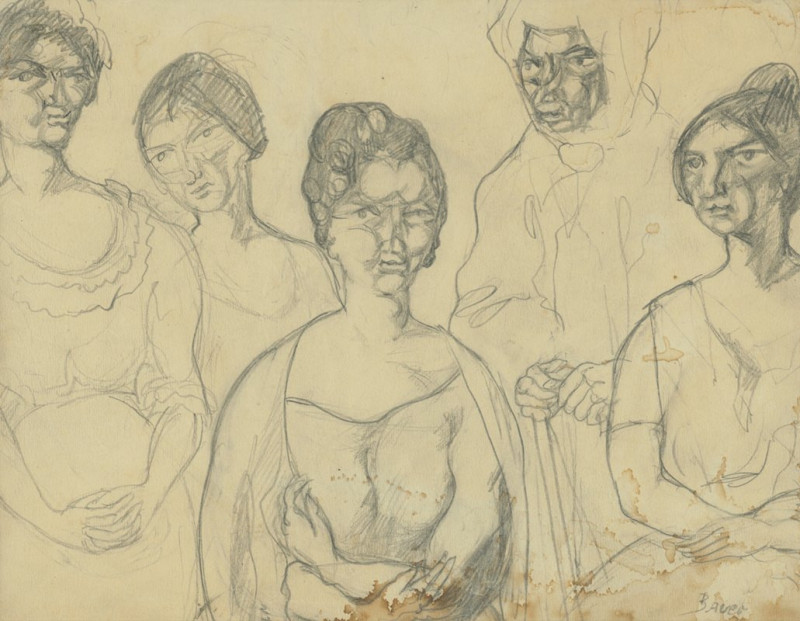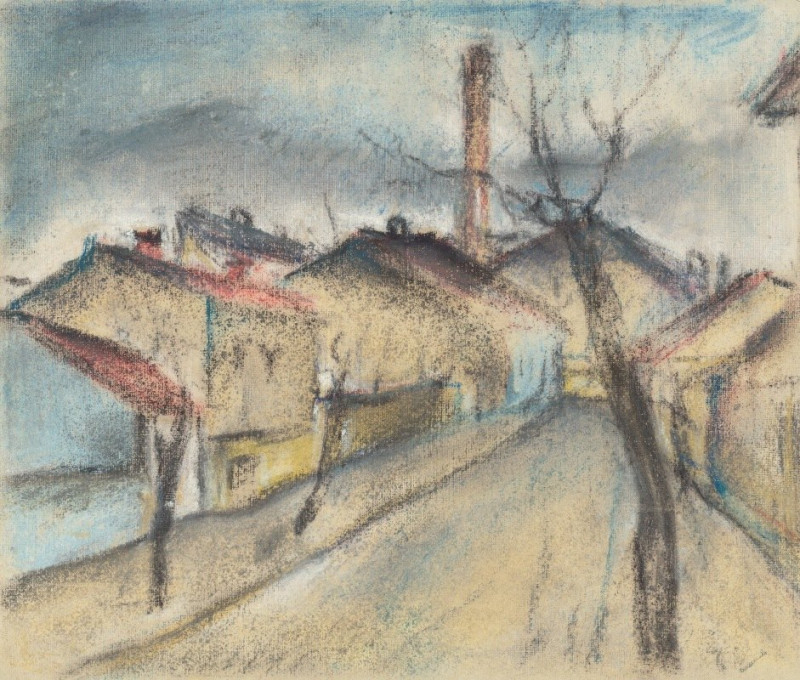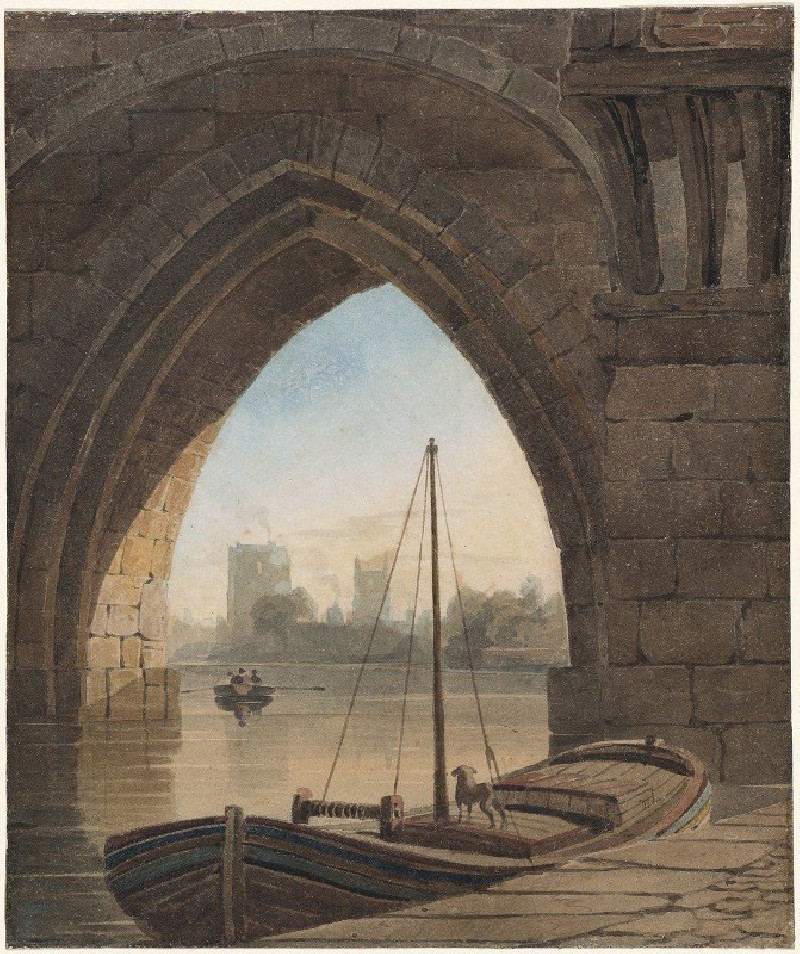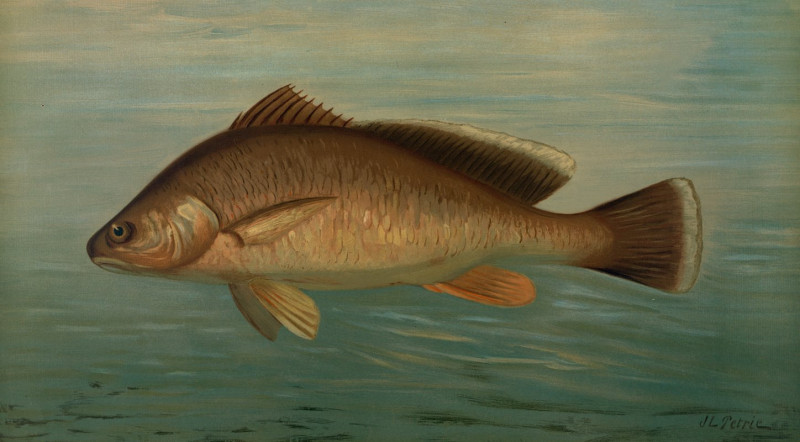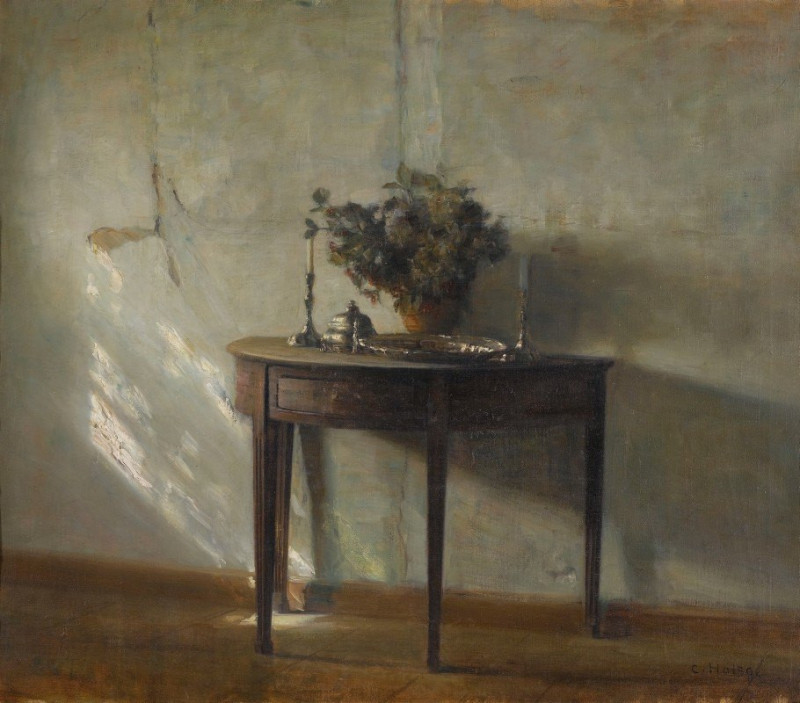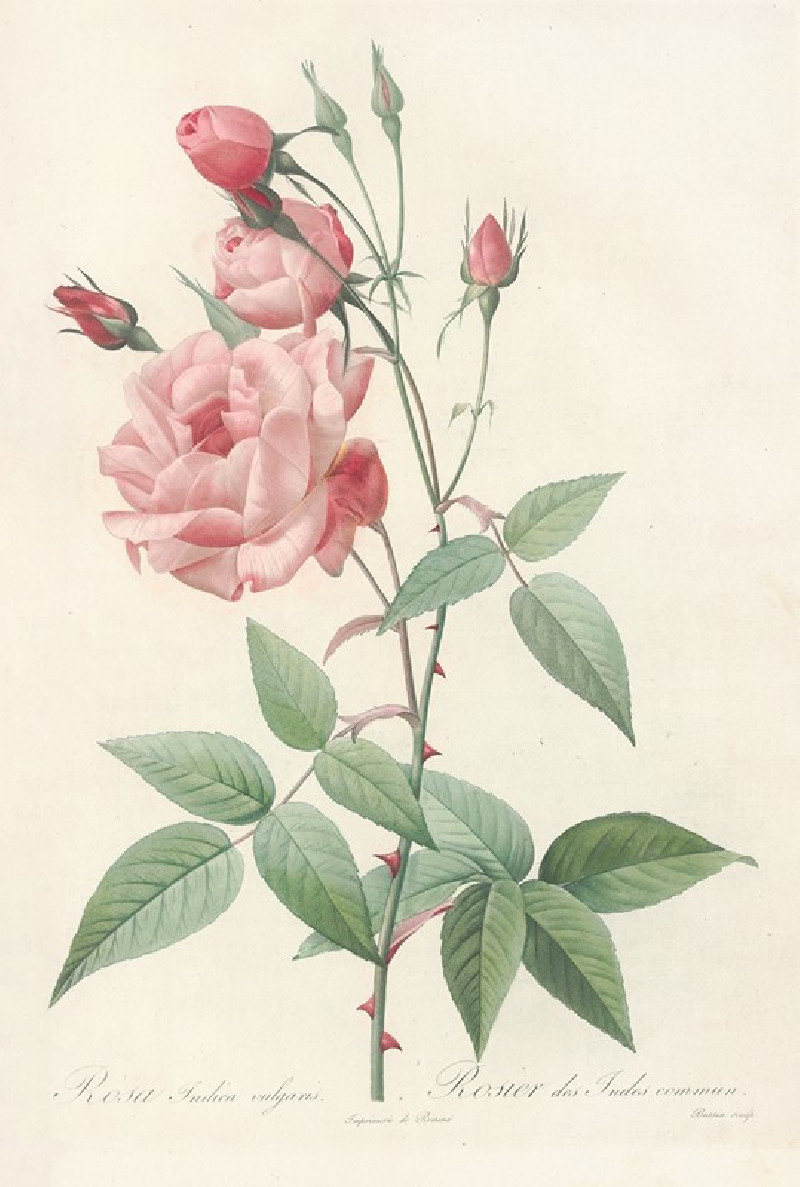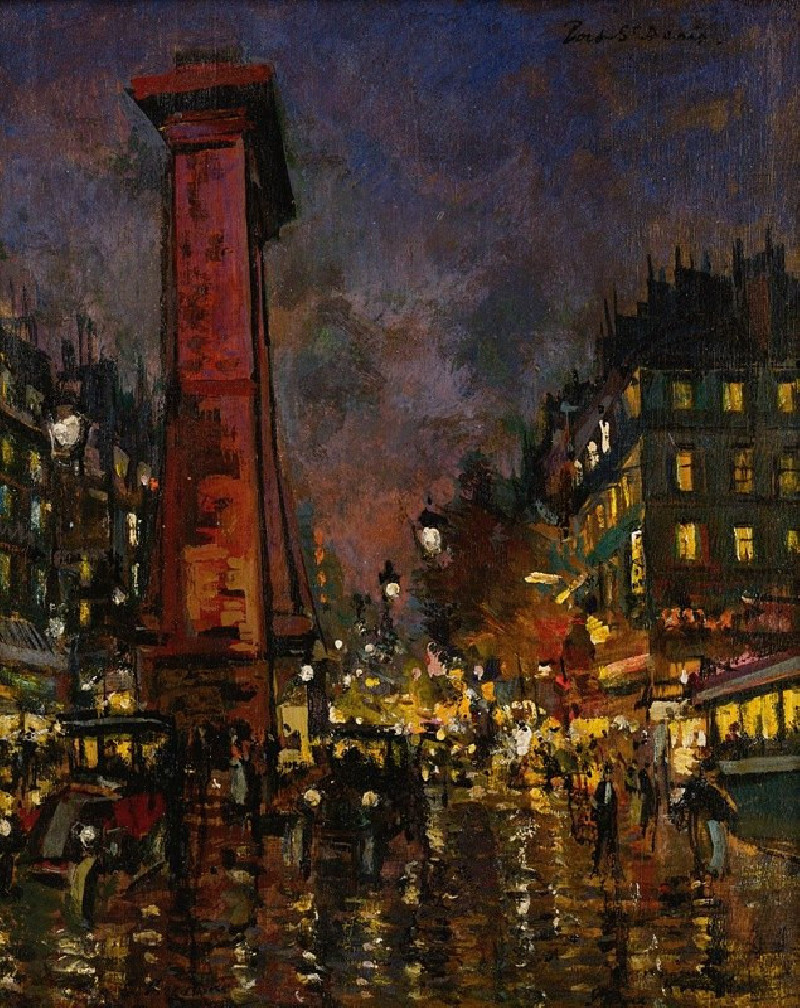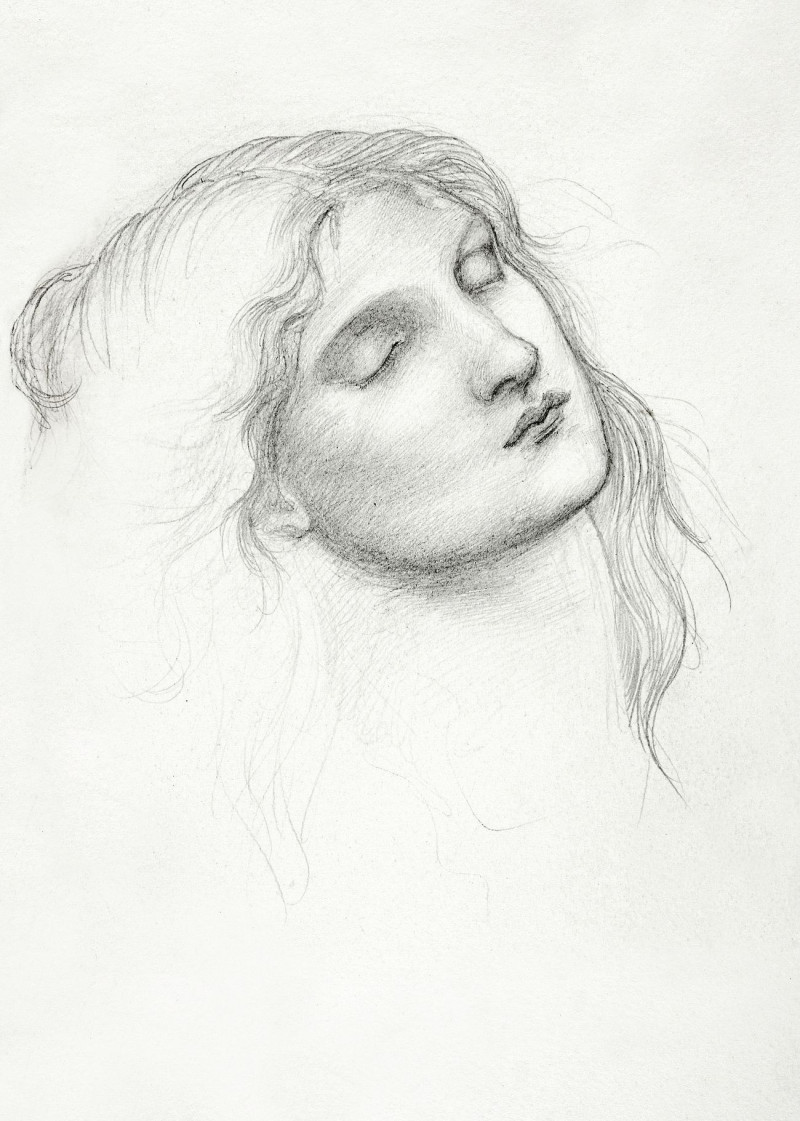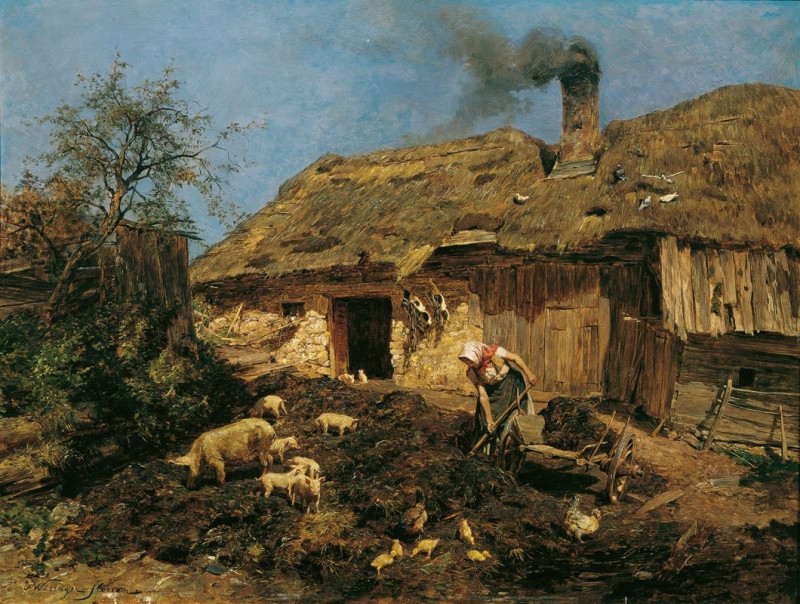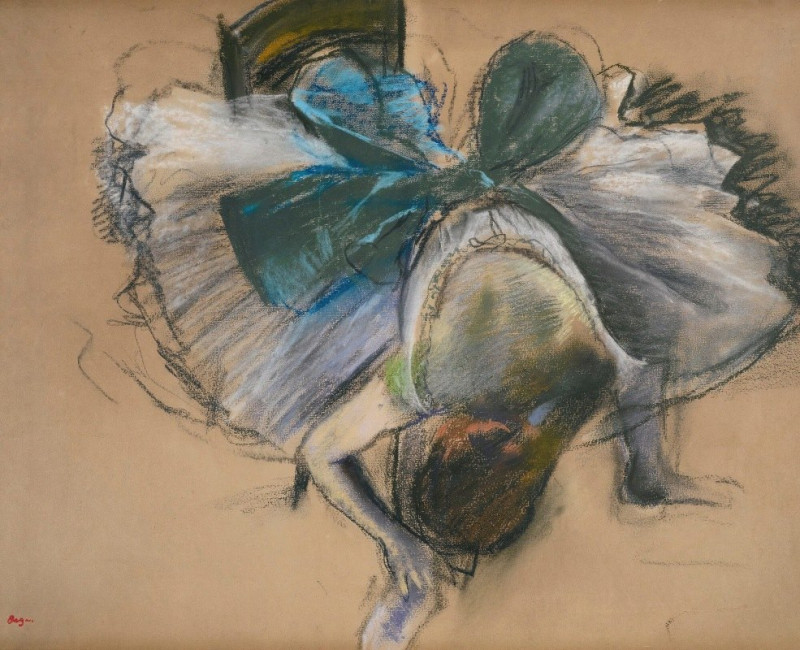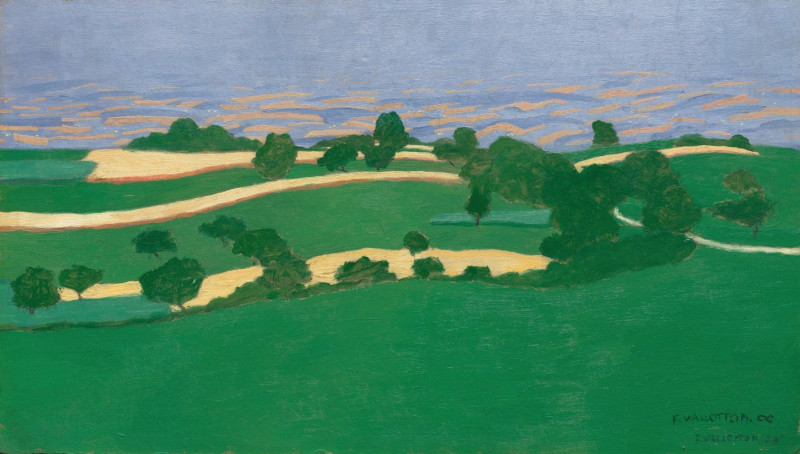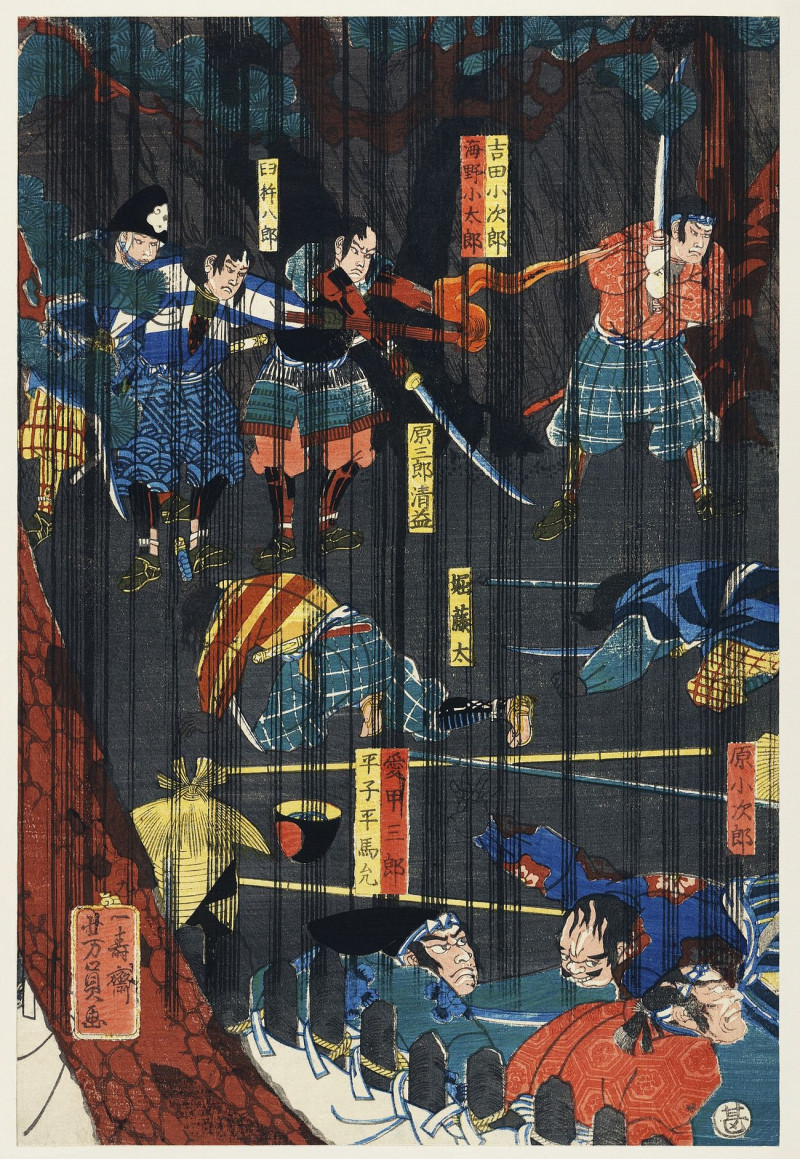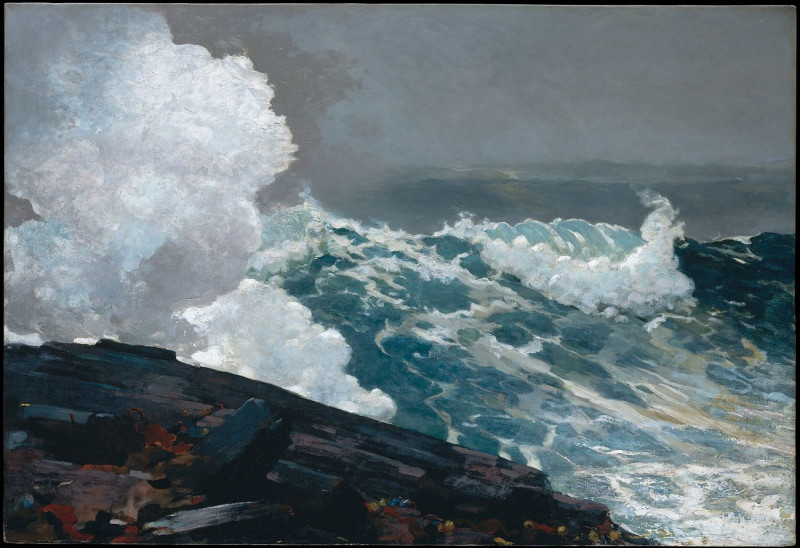Súd v žalári (1927)
Technique: Giclée quality print
Recommended by our customers
More about this artwork
Konštantín Bauer’s impactful artwork, "Súd v žalári" (Trial in the Dungeon), painted in 1927, captures a stark, emotionally charged scene set within the gloomy confines of a dungeon. The composition is rich in dramatic contrast and detailed with expressive brushstrokes that emphasize the tension of the scene.The painting illustrates a group of somber figures gathered around a rudimentary wooden table, seemingly in the midst of a clandestine trial or interrogation. The figures are cloaked in shadows, their features etched with lines of concern and severity, suggesting the gravity of the situation. The light streaming through a barred window casts harsh patterns on the floor and walls, adding a layer of foreboding to the atmosphere.This poignant representation not only evokes a strong emotional response but also prompts reflection on themes of justice and authority, highlighting Bauer's mastery in conveying complex narratives through his art. The chiaroscuro technique used by Bauer enhances the sense of depth and isolation, making "Súd v žalári" a compelling study of human drama and historical context.
Delivery
Returns
Konštantín Bauer was a Slovak painter.
Konštantín Bauer was born on November 24, 1893 in Slovenská Ľupča. He spent his childhood in Banská Bystrica. At the age of fifteen, he moved with his parents to Košice, where he graduated from high school. After graduating in mechanical engineering in Budapest in 1915, he worked briefly as an engineer in Novo Mesto pod Šiatrom. From 1916 to 1918 he worked as a railway engineer in Transylvania and then as a civilian employee at the Ministry of War in Vienna.

